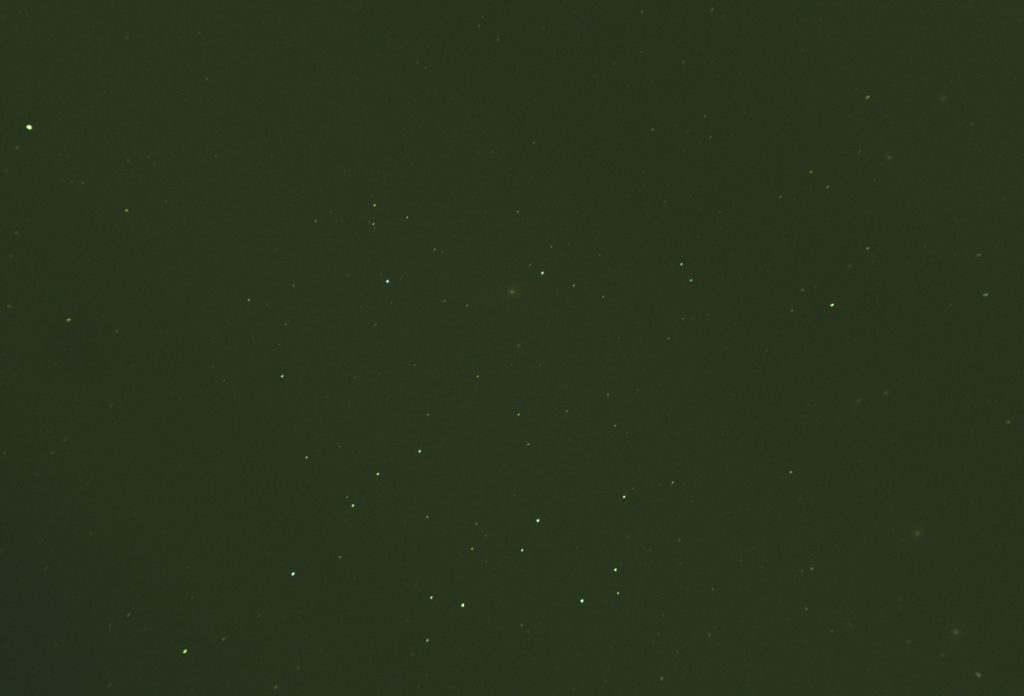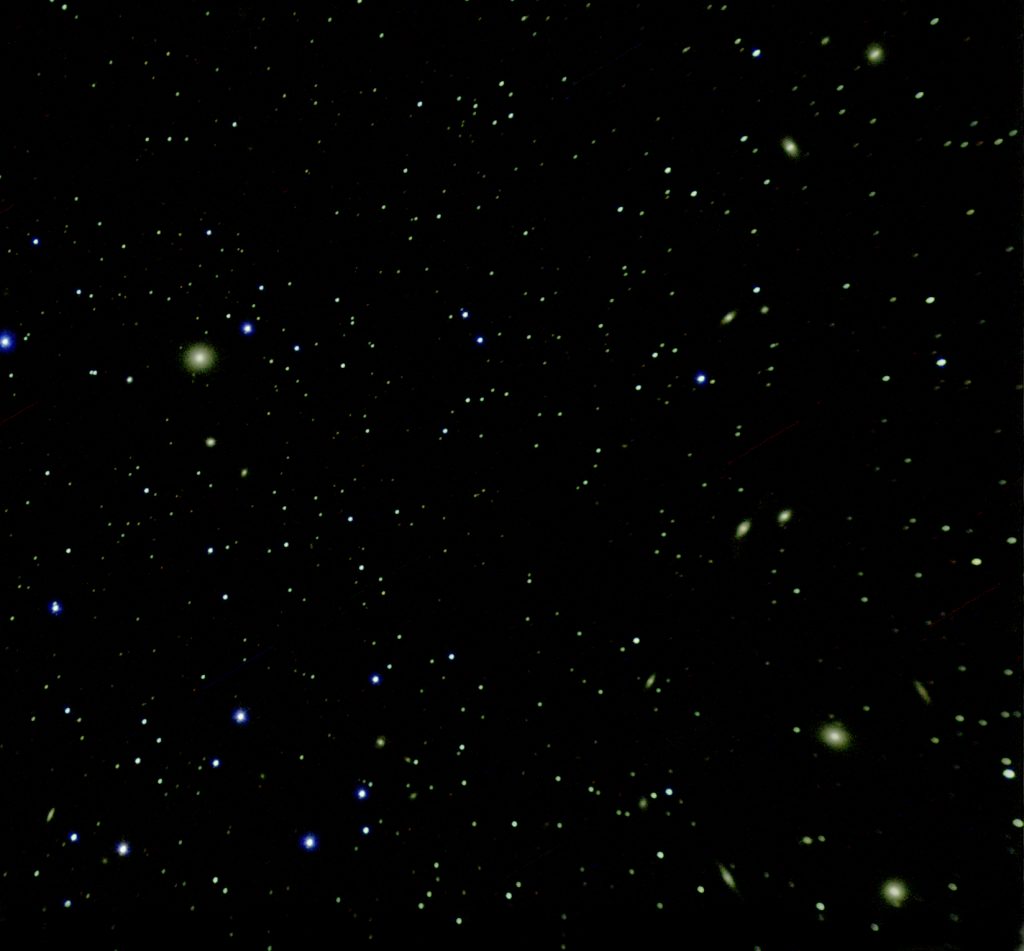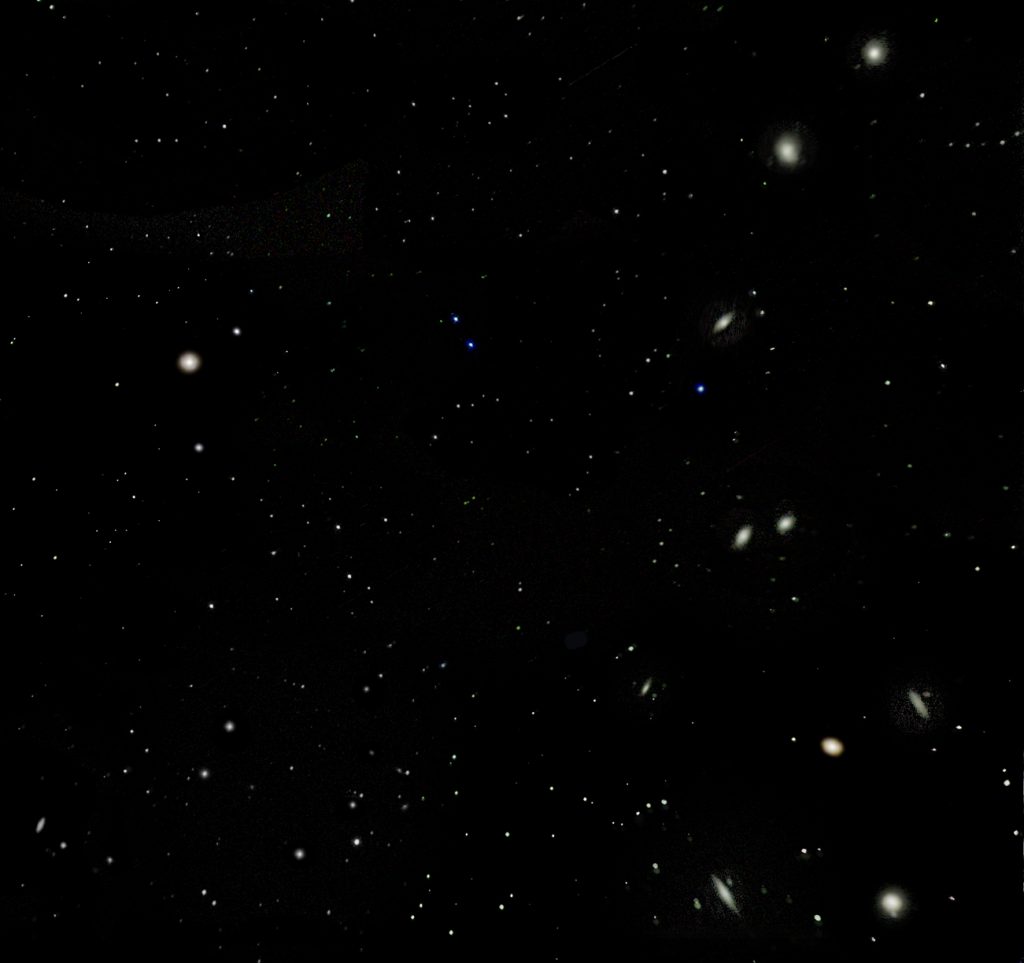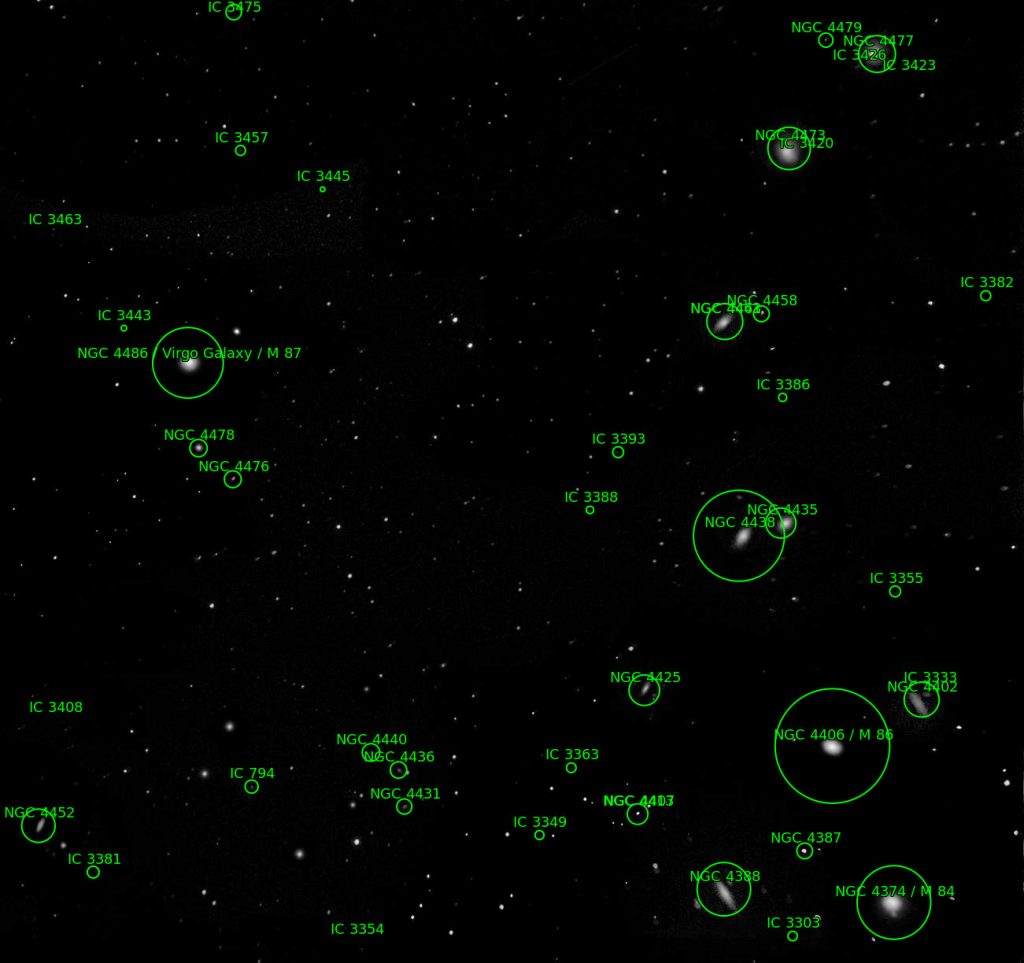MAY 2021
Star Hopping with a ‘goto’ Telescope mount – M87 and Markarian’s Chain
[This is just one of many articles in the author’s Astronomy Digest.]
This appears to be a non sensible topic as the whole pointof having a goto mount is that one does not have to star hop! However, there are times when the use of starhopping can help; these are when the desired object is very small in angularsize and would appear star-like so making it difficult to be sure that it layin the field of view – the Eskimo Nebula is an example – or when it is a veryfaint object such as a Virgo Cluster galaxy when the sky transparency is poorand there is significant light pollution.
Having checked the alignment of my mount and set thetelescope in the ‘home’ position its goto abilities are excellent and thedesired object will usually be in the field of view of my astro camera. Following some small pointing corrections,the mount is ‘synchronised to target’and will then accurately find objects in that region of the sky.
So, if hunting an elusive target, it can be useful to firstfind and synchronise on a nearby bright star before moving to the location ofthe object. One example arose in May2020 when I was asked to image M87 in Virgo for a comparative test between myCMOS cooled astro camera and a colleagues cooled CCD astro camera. The transparency was dire and this means thatthe effective skyglow (light pollution) was visually masking all but the verybrightest stars. M87 is over to the leftof Leo, so I decided (wrongly as it turned out) to first goto and then synchroniseon Regulus. The plan was to then to gotoand synchronise on Denebola, also in Leo but lying not far from M87.
Unfortunately as it turned out, at the time Regulus was to the west of the Meridian but Denebola to the east so the mount did a meridian flip. This might well have worked but the 12 volt supply cable to power the camera’s cooling system became entangled and the slew had to be aborted. So the whole process had to be carried out again from the telescope’s home position – this time moving directly to Denebola. The moral is to be aware of cable problems if a meridian slew is anticipated. [Note to self: my mount does allow cables to be routed through the polar axis to eliminate this problem. Pleasingly, the mount will not do a meridian flip when tracking an object through the meridian.]
The image below is a single 15 second sub-exposure showingthe significant light pollution due to the poor transparency. The image is green as the camera has agreater green sensitivity. M87 can justbe seen just above the centre of the frame as I had adjusted the pointing toallow M84 and M86 (part of Markarian’s Chain) to be within the frame and whichwere just visible to the lower right.

Considering the level of light pollution, I was surprised asto what had become visible when the 228 sub-exposures were aligned and stacked,the sky glow removed* and the image stretched*. To use a comparable telescope focal length as my colleague, I had beenasked to use my 80 mm, f/5, achromat guide scope and so the chromatic aberrationseen as blue halos around the brightest stars in the cropped result was veryobvious. (* Articles in the digest coverthese two procedures.)

The, now free, atrophotography program Images Plus has a special function to reduce star sizes which canindividually reduce the red, green and blue channels. Reducing just the blue channel removes muchof the chromatic aberration. Having usedthe ‘colour balance’ tool in AdobePhotoshop to remove the green cast resulted in the image below – which Ifound quite pleasing given the observing conditions.

I find it interesting to submit a captured image to be plate solved by Astrometry.net to show what objects lie within the field. It showed that some faint objects were in fact galaxies, not stars. [I am always amazed as to how it can do this without knowing either the area being imaged or the image scale.]
